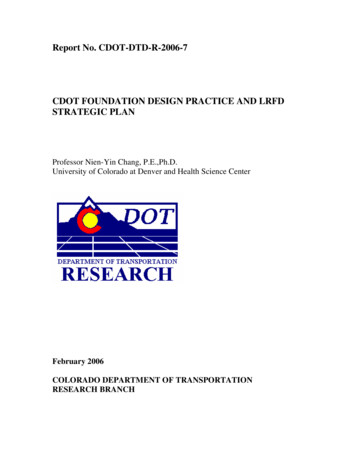
Transcription
Report No. CDOT-DTD-R-2006-7CDOT FOUNDATION DESIGN PRACTICE AND LRFDSTRATEGIC PLANProfessor Nien-Yin Chang, P.E.,Ph.D.University of Colorado at Denver and Health Science CenterFebruary 2006COLORADO DEPARTMENT OF TRANSPORTATIONRESEARCH BRANCH
The contents of this report reflect the views of the author(s), who is(are) responsiblefor the facts and accuracy of the data presented herein.The contents do notnecessarily reflect the official views of the Colorado Department of Transportation orthe Federal Highway Administration. This report does not constitute a standard,specification, or regulation. The preliminary design recommendations should beconsidered for only conditions very close to those encountered at the load test sites andper the qualifications described in Chapter 6. Use of the information contained in thereport is at the sole discretion of the designer.
1. Report No.2. Government Accession No.3. Recipient's Catalog No.CDOT-DTD-R-2006-74. Title and Subtitle5. Report DateCDOT FOUNDATION DESIGN PRACTICE AND LRFDSTRATEGIC PLANFebruary 20066. Performing Organization Code7. Author(s)8. Performing Organization Report No.Nien-Yin Chang, P.E., Ph.D.CDOT-DTD-R-2006-79. Performing Organization Name and Address10. Work Unit No. (TRAIS)University of Colorado at Denver and Health Sciences CenterCampus Box 113, P. O. Box 173364, Denver, Colorado 8021711. Contract or Grant No.12. Sponsoring Agency Name and Address13. Type of Report and Period CoveredColorado Department of Transportation - Research4201 E. Arkansas Ave.Denver, CO 80222Final ReportPG: 01HQ562Contract Routing #:99HAA004614. Sponsoring Agency CodeStudy # 80.1215. Supplementary NotesPrepared in cooperation with the US Department of Transportation, Federal Highway AdministrationThe Colorado Department of Transportation (CDOT) has adopted the AASHTO LRFD Bridge DesignSpecifications for the design of all highway bridges. This prompt implementation of the LRFD code waspossible because of the history of LFD and ASD designs and the uniformity of the structural materials, concreteand steel. The implementation of geotechnical LRFD is hampered by the non-uniformity of the geologicalmaterials, soils and rocks, which requires the evaluation of the state-specific resistance factors. The process ofevaluation and calibration of resistance factors is complex and time-consuming. It is based on the theory ofprobability and reliability. It requires the creation of a property database through a long-term data collection,the evaluation of property statistics, the formulation of probability density function for each property of eachgeological material, the determination of probability of failure, and the selection of reliability of index. Incivil engineering designs the failure probability is determined by a code committee and, in the AASHTO code,the failure probability is determined to be 1/10,000.Fostering a smooth process for the design of bridges and bridge foundations requires the implementation ofboth structural and geotechnical LRFD procedures. The FHWA has set the Year 2007 as the target time for thefull implementation of the AASHTO LRFD Bridge Design Specifications and it is urgent for CDOT to devoteeffort to the implementation of geotechnical LRFD, which requires both financial and time commitment fromall concerned parties, particularly the CDOT Central Administration. This study has found that the CDOTgeotechnical practice is severely deficient in manpower and field test equipment. Without immediate remedialactions the quality of CDOT geotechnical services will be of great concern. The formation of an LRFDCommittee with members from the CDOT Administration, Bridge Branch, Materials Laboratory (Geotechnicaland Soil-Rockfall Programs), and Research Branch; structural and geotechnical engineering communities; andacademia is recommended to strategize the implementation of the geotechnical LRFD procedures.17. Keywords18. Distribution StatementNo restrictions. This document is available to theload and resistance factor design (LRFD), allowablepublic through the National Technical Informationstress design (ASD), load factor design (LFD),standard penetration test (SPT), finite element analysis, Service, Springfield, VA 22161bridge design, piers19. Security Classif. (of this report)NoneForm DOT F 1700.7 (8-72)20. Security Classif. (of this page)NoneReproduction of completed page authorized21. No. of Pages20722. Price
CDOT Foundation Design Practice and LRFD Strategic PlanProfessor Nien-Yin Chang, P.E.,Ph.D.University of Colorado at Denver and Health Science CenterReport Number CDOT-DTD-R-2006-7Sponsored by theColorado Department of TransportationIn Cooperation with theU.S. Department of TransportationFederal Highway AdministrationFebruary 2006Colorado Department of TransportationResearch Branch4201 E. Arkansas Ave.Denver, CO 80222(303) 757-9506
ACKNOWLEDGEMENTSThe opportunity to lead the study on the very important issue of the implementation ofgeotechnical load and resistance factor design is highly appreciated and it presented agreat challenge to the Principal Investigator, Dr. Nien-Yin Chang of the Center forGeotechnical Engineering and Sciences at the University of Colorado at Denver andHealth Sciences Center. A great deal was learned about the strategic plan for theimplementation of geotechnical LRFD at the Colorado Department of Transportation.This study on “CDOT Foundation Design Practice and LRFD Strategic Plan” came aboutduring a causal discussion with Dr. Hsing-Cheng Liu, Manager of the CDOTGeotechnical Program, about the need for the implementation of geotechnical LRFD by2007 as recommended by the Federal Highway Administration. The discussioncontribution from research panel members, Dr. Hsing-Cheng Liu of the GeotechnicalProgram, Mr. C. K. Su of Soils and Rockfall, Dr. Trever Wang of Bridge, and Dr. NaserAbu-Hejleh and Mr. Richard Griffin of Research and the funding from the ColoradoDepartment of Transportation and the Federal Highway Administration are gratefullyappreciated.iii
EXECUTIVE SUMMARYLoad and resistance factor design (LRFD) was adopted by AASHTO to replace theallowable stress design method (ASD). As opposed to the ASD, where all uncertaintiesare accounted for in a factor of safety, the LRFD approach applies separate factors toaccount for each uncertainty in load and resistance. This provides a reliable and rationalapproach consistent with the safety requirement for highway structural and substructuredesigns. In the LRFD method, the external loads are multiplied by load factors, while thesoil resistances are multiplied by resistance factors. A limit state is a condition beyondwhich a structural component ceases to fulfill it design function. The limit states, whichmust be evaluated in the AASHTO LRFD specification, include strength and servicelimit states. The strength limit state ensures that the design procedure provides adequateresistance (or margin of safety) against geotechnical and structural failures. The servicelimit state ensures that the function of the structure under normal service conditionsperforms satisfactorily (i.e., deformations is less than its tolerance). Hence, thefoundation design procedure requires the estimation of the nominal response (ultimatestrength and deformation) of the highway foundation when subjected to loading.Foundation deformations can be evaluated from in-situ load tests and analytical methods(e.g., the finite element method and simple geotechnical analysis). Since the evaluationof foundation displacements by LRFD are performed in accordance with the service limitstate, where load and resistance factors are both equal to unity, the methodologies used toestimate settlement and lateral deflection are identical for LRFD and ASD. Theimplementation of LRFD in CDOT design procedure with strength limit state requires 1)proper evaluation of soil strength and deformability, 2) establishment of the soil propertydatabase, and 3) evaluation and calibration of resistance factors.Some of the methods employed in the prediction of the ultimate soil resistance areempirical, e.g., friction angle based on standard penetration test (SPT) blow counts,whereas others are rational based on classical theoretical soil mechanics (bearing capacitybased on measured soil friction angle and cohesion). CDOT uses an empirical formula,Denver Magic Formula (DMF), to estimate the nominal strength of soils and rocks in thepier design as follow:Qallowable 0.5 N kips/ft2 assuming a factor of safety of 2.5.The formula has been adopted extensively by the Denver geotechnical community in thedesign of drilled shafts and driven piles for many decades starting with F. H. Chen(1988). CDOT has adopted it in the deep foundation designs for many years and therehas been a lack of documented drilled shaft failures. This implies that the method mightbe somewhat conservative for the deep foundation design in Colorado and somecalibration is needed for the implementation of the method in the LRFD deep foundationdesign in order to evenly apply the risk factor to the different strength contributingfactors. Because of the nature of SPT tests, the blow count most likely reflects theundrained shear strength of soils or soft rocks. It is important to note that CDOT is notthe first one to apply this method in assessing the bearing capacity of deep foundations.iv
In fact, the following formulas for the allowable end bearing capacity were proposed bydifferent researchers and practitioners assuming a factor of safety of 2.5:1.5 N ksf (Meyerhoff, 1956),1.0 N ksf (Terzaghi and Peck, 1967),0.5 N ksf (Reese, Touma, and O’Neill, 1976), and0.37 N ksf (Strounf and Butler, 1975)The current DMF adopts a formula similar to the one proposed by Reese, Touma andO’Neill. This formula gears towards ASD, for it predicts the allowable soil and rockresistances using the SPT blow count (N) alone. There is nothing wrong withimplementing DMF in the LRFD foundation designs. However, to implement DMF inthe LRFD bridge substructure design in Colorado requires the calibration againstColorado soils and rocks. Two possible approaches are suggested. While it deviatessomewhat from the recommended FHWA/AASHTO LRFD design approach, it can becalibrated and improved for use in deep foundation designs with data from PDA (piledriving analyzer) and full-scale load tests. For CDOT foundation design practice, twoapproaches are recommended:First, stay the course of using DMF. This approach may exert less impact to the currentCDOT foundation design practice. However, it still needs systematic calibration. Asignificant number of load tests are required to generate a database for the ultimatestrength of Colorado piers and soils and rocks. The data should include SPT blow countN and soil/rock properties including index properties, strengths, and compressibility.When a sufficient database is established, the strength and compressibility can be related tothe blow count, N, and, if necessary, index properties of soils and rocks and used inpredicting the bearing capacity and settlement for different foundations. This fieldultimate foundation capacity can be compared with the nominal foundation capacitycalculated from analytical methods for the purpose of evaluating the resistance factors.Additionally, the correlation between the N value and ultimate strength can be used for amore reliable N value-based design method.Second, adopt the FHWA/AASHTO recommended LRFD design practices with anattempt to evaluate the Colorado-specific resistance factors. While the approach allowsus to gain some technical support from other states, some changes in geotechnicalpractice in CDOT are needed. This requires new field and laboratory equipment for theevaluation of the strength and deformability of Colorado soils and rocks and theassociated resistance factors because of the distinctive characteristics of the subsurfacematerial in the Colorado. Initially, the values of the resistance factors recommended inthe AASHTO design specifications can be used, while a designer needs to exercise greatcaution by taking the unique properties of the Colorado soils and rocks into account.During the transition period the LRFD design can be compared to the ASD. Eventuallyv
Colorado needs to have its own resistance factors for geotechnical and bridgesubstructure designs.In sum, the implementation of geotechnical LRFD is logical and unavoidable. Thecurrent DMF-based design needs to move toward the LRFD-based DMF design duringthe transition and eventually the AASHTO LRFD procedures. Internally CDOT hasalready adopted the AASHTO LRFD Bridge Design Specifications in the Bridge Branch.To allow a smooth design process of bridge superstructures and substructures requires theimplementation of geotechnical LRFD. Technically, the LRFD procedures are morerational than the ASD and LFD alternatives, for they apply a uniform risk to all designfactors. The FHWA has recommended that all state DOTs implement the LRFDprocedures by 2007.Whichever approach CDOT chooses to enforce, the complete implementation requiressignificant monetary and time investments. New subsurface investigation procedures,laboratory and field testing equipment, and full-scale foundation load tests are needed.This laboratory/field testing equipment and full-scale testing will provide the informationfor the database needed for the LRFD implementation. Additionally, a geotechnicalLRFD training is needed to facilitate a smooth transition from ASD to LRFD. Carefulplanning will minimize the potential delay of project delivery. This may require,initially, a parallel design effort using both ASD and LRFD procedures to avoid anydelay in project delivery and also provide information for comparison and calibration.vi
IMPLEMENTATION PLANTo successfully implement the LRFD procedures in geotechnical investigation anddesign, the following steps are strongly recommended:1. Establish a geotechnical LRFD Committee, a think-tank group, to formulate thestrategy and plan for an effective implementation. The committee membershipshould include some responsible persons from the CDOT Central Administration,Bridge Branch, Geotechnical Program, and Soil-Rock Fall Program; onerepresentative from each of the structural and geotechnical consulting industries;and a couple from academia knowledgeable in LRFD, probability and reliability.2. Hire additional geotechnical engineering and investigation staff required for thequality service delivery, public safety and implementation of LRFD procedures ingeotechnical design and investigation.3. Create a position(s) for foundation engineers, who are responsible for allfoundation designs. The person(s) should have the overlapping capability ofstructural and geotechnical engineers to effectively communicate with bothgeotechnical and structural staff.4. Upgrade the field investigation facility by purchasing CPT, PMT, GE, and VSTequipment.5. Activate these excellent laboratory testing apparatuses and place them in aproduction line to generate urgently needed laboratory data of soils and rocks forthe formulation of resistance factors for Colorado-specific geological materials.6. Select deep foundation as the first foundation type for geotechnical LRFDimplementation and formulate detailed procedures for the evaluation of allnecessary state-specific resistance factors for all geological materials.7. Continue to practice DMF but establish an enhancement program for establishingresistance factors and calibration, while exploring the feasibility of using otheralternative design methods.8. Develop in-house full-scale load test capability to check the designrecommendation and calibrate the geotechnical LRFD recommendation.vii
TABLE OF CONTENTS1. Introduction.11.1 History of LRFD Development .11.2 Significance of the Implementation of CDOT Geotechnical LRFDProcedures.11.3 Research Goal and Objectives .22. Fundamentals and Development of LRFD Specifications .32.1 Development History of LRFD Specifications.32.2 ASD versus LRFD .52.2.1 Allowable Stress Design 52.2.2 Load and Resistance Factor Design (LRFD) .52.3 Fundamentals of LRFD .52.3.1 Probability Density Function, Probability of Failure, Reliability, andReliability Index .52.3.2 Limit State.82.3.3 Bias Factor .82.3.4 Calibration.93. Survey of the Status of Geotechnical LRFD Implementation atDifferent State DOTs.103.1 Introduction.103.2 Survey Questionnaires .103.3. Survey Results and Discussion .103.3.1 Staff.103.3.2 Laboratory and Field Testing and Full-Scale Load Test Facilities.113.3.3 Geological Materials.123.3.4 Geotechnical Investigation and Design Practices .123.3.5 Status of LRFD Implementation.134. CDOT Geotechnical Investigation, Design Practices, and PersonnelResources .144.1 Geotechnical Personnel Resources .144.1.1 CDOT Geotechnical and Soil/Rock Fall Program Organization.144.1.2 Geotechnical Personnel Resources Among Neighboring Statesand Comparison .144.2 Field and Laboratory Testing Facilities .144.2.1 CDOT Existing Geotechnical Investigation Facilities.144.2.2 Recommended Addition to New Geotechnical InvestigationEquipment .154.2.3 Geotechnical Testing Facilities.164.3 Geotechnical Investigation and Design Practices .164.3.1 CDOT Geotechnical Investigation and Design Practices .164.3.2 Geotechnical Investigation and Design Practices in NeighboringStates .17viii
4.3.3 Comparison and Recommendations .174.4 Geotechnical LRFD Implementation.184.4.1 CDOT Status.184.4.2 Status of LRFD Implementation in Neighboring States .195. Status and Need for Implementation of Geotechnical LRFD atCDOT .215.1 Introduction.215.2 CDOT Geotechnical Design and Investigation Practices, and LRFDNeeds.215.2.1 Colorado-Specific Shortcomings .215.2.2 It Is Imperative, Not a Choice .225.3 Implementation of Substructure LRFD in Colorado .235.3.1 Introduction.235.3.2 Long-Term Effort.235.3.3 Deep Foundation Recommended for Substructure LRFDImplementation .246. Strategic Plan for the Implementation of Geotechnical LRFD atCDOT .256.1 Manpower .256.2 Laboratory, Field, and Full-Scale Load Test Facilities.256.2.1 Laboratory.256.2.2 Field Test and Exploration Equipment .256.2.3 Full-Scale Load Test Equipment .256.3 Substructure Foundation for LRFD Implementation.266.4 Implementation Plan and Strategy .267. Deep Foundation Design .287.1 Introduction.287.2 Material Parameter Selection.307.2.1 Introduction.307.2.2 Young’s Modulus of Soils (Es) .307.2.3 Methods for Determining Es .307.2.4 Empirical Correlations of Es with Shear Modulus (G) .357.2.5 Coefficient of Horizontal Subgrade Reaction (kh).377.2.6 Methods for Determining kh .387.2.7 Empirical Correlations .397.2.8 Relationship Between Es and kh .407.2.9 Es for Numerical Models .417.2.10 Estimation of cu .427.2.11 Ramberg-Osgood (RO) Parameters for NIKE3D .577.3 Broms Method .627.3.1 Fundamental Theory and Assumptions .627.3.2 Lateral Ground-line Deflections (y0) at Working Loads .667.3.3 The Ultimate Lateral Resistances of Piles (Pult) .66ix
7.3.4 Coefficient of Horizontal Subgrade Reaction (kh).717.3.5 Comparisons Between Broms Method and Test Results.767.3.6 Summary and Conclusions .807.4 Analyses Using LPILE Program.817.4.1 Introduction.817.4.2 Theoretical Background of LPILE.827.4.3 Input Data.917.4.4 Evaluation of LPILE Program Using Field Test Results.947.4.5 Summary and Conclusions .978. Summary, Conclusions, and Recommendations for Further Study .99References . . 108Appendix A – Survey Results A-1Appendix B – Finite Element Method and Calibration .B-1Appendix C – Finite Element Analyses of Rock Socketed Drilled Shafts .C-1x
LIST OF FIGURESFigure 2-1 Probability Density Function for Load . .6Figure 2-2 Probability Density Function for Resistance.6Figure 2-3 Probability of Failure .7Figure 2-4 Definition of Reliability. . .7Figure 7-1 The Effective Pre-consolidation Pressure (σ’c) vs. LiquidityIndex (LI) .31Figure 7-2 Correlation Factor Kc used in Eu Kccu.34Figure 7-3 Plot of Ratio of Ei to Cu from Unconfined Compression Testsof Clays .35Figure 7-4 Ratio of Shear Modulus (G) to cu for Saturated Clays.37Figure 7-5 Soils Modeled by Winkler’s Assumptions.38Figure 7-6 Flow Chart for Determination of Es .42Figure 7-7 Correction Factor, λ for Vane Shear Tests.44Figure 7-8 Idealized Pressure-Volume Curve from Menard-type PreboredPressuremeter Test .45Figure 7-9 Variation of Undrained Shear Strength Ratio with OCR forFive Soils .46Figure 7-10 Undrained Shear Strength Ratio vs. OCR for Marine Clay .47Figure 7-11 Undrained Shear Strength Ratio vs. OCR.51Figure 7-12 Eu/cu vs. Shear Stress Ratio.54Figure 7-13 Eu/cu vs. OCR at Two Shear Stress Levels .54Figure 7-14 Back-figured Es for Piles in Clay .56Figure 7-15 Typical Backbone Curve.60Figure 7-16 Typical Stress-Strain Curve .61Figure 7-17 Effects of γy on Backbone Curves.61Figure 7-18 Effects of α on Backbone Curves .62Figure 7-19 Effects of r on Backbone Curves .62Figure 7-20 Failure Modes for Short and Long Piles .63Figure 7-21 Soil Reaction and Bending Moment Distribution for ShortPiles.63Figure 7-22 Soil Reaction and Bending Moment Distribution for LongPiles.64Figure 7-23 Flow Chart for Determining Behavior of Piles .65Figure 7-24 Pile Subjected to the Lateral Load .67Figure 7-25 Lateral Deflections at Ground Surface.67Figure 7-26 Solution Procedures of Pult for Short Piles .69Figure 7-27 Graphical Solution of Pult for Short Piles.70Figure 7-28 Graphical Solution of Pult for Long Piles .72Figure 7-29 Ground-line Deflections from Back-figured kh for DunnavantData .74Figure 7-30 Ground-line Deflections from Back-figured kh for Reese &Welch Data.75Figure 7-31 Ground-line Deflections by Broms Using Parameter Set 1 forDunnavant Data .
The Colorado Department of Transportation (CDOT) has adopted the AASHTO LRFD Bridge Design Specifications for the design of all highway bridges. This prompt implementation of the LRFD code was possible because of the history of LFD and ASD designs and the uniformity of the structural materials, concrete and steel.
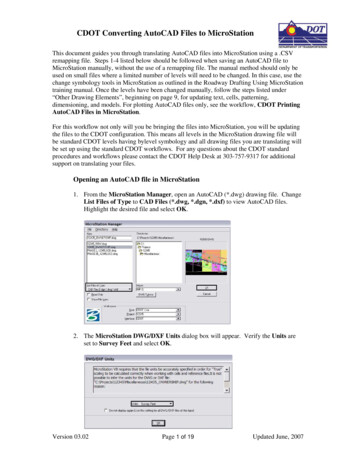
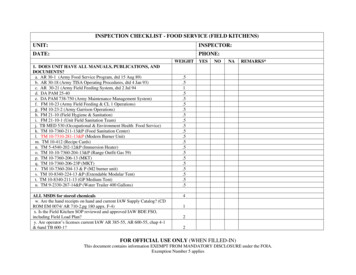
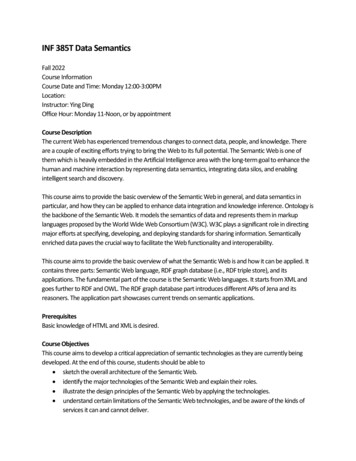
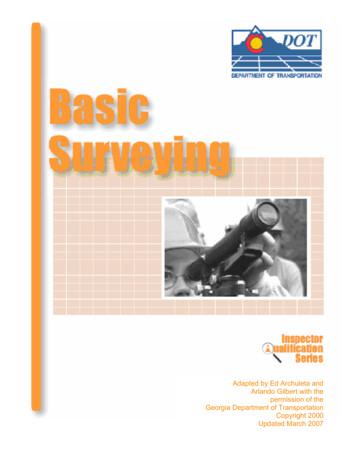
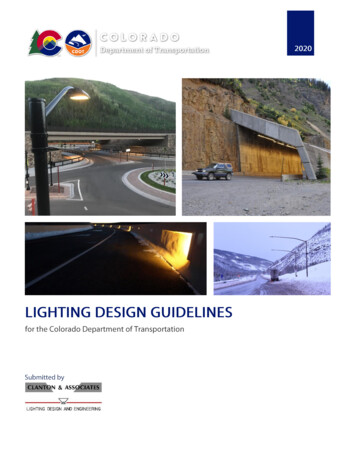
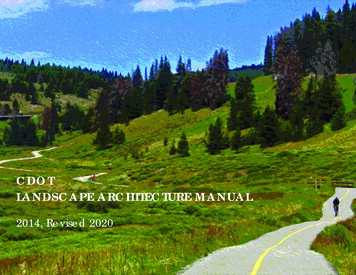

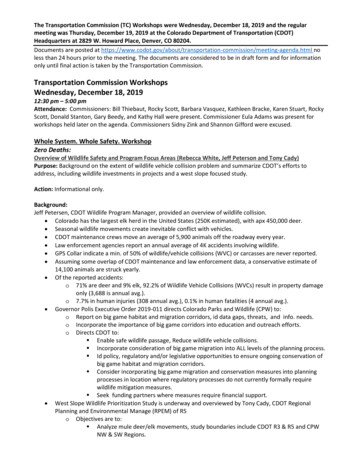
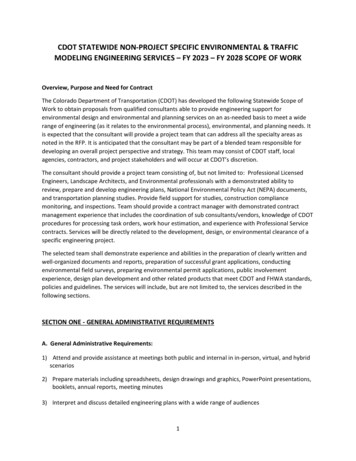
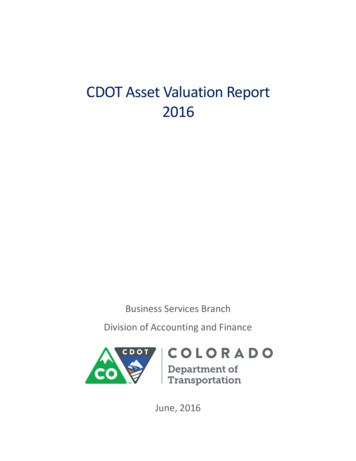
![Trusted Computer System Evaluation Criteria ['Orange Book']](/img/12/dod85.jpg)